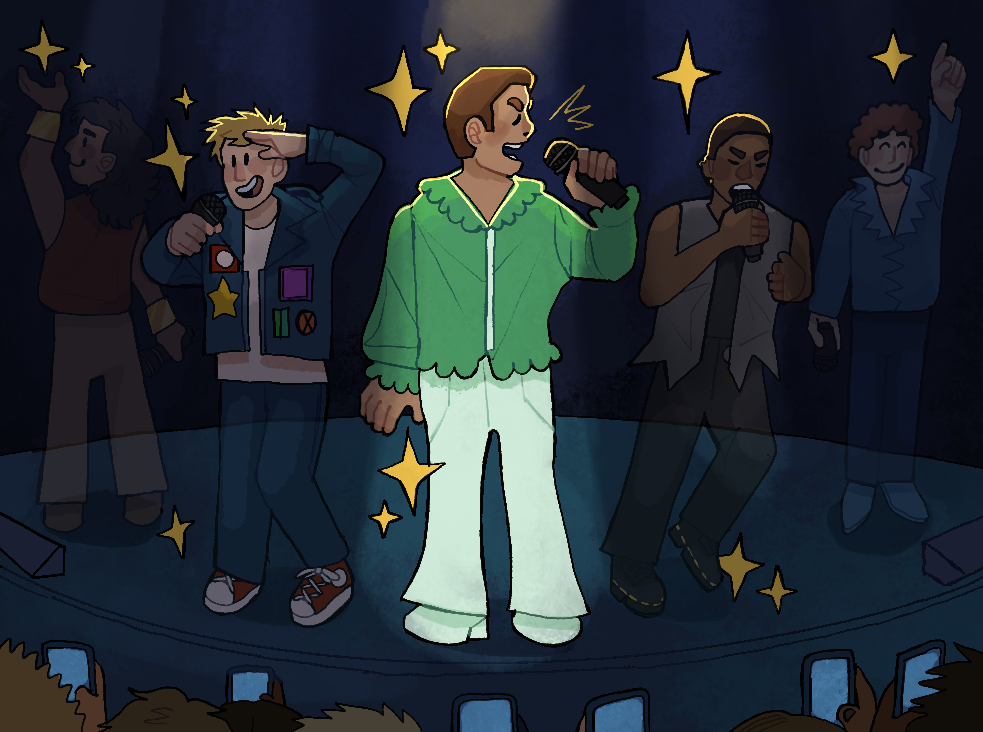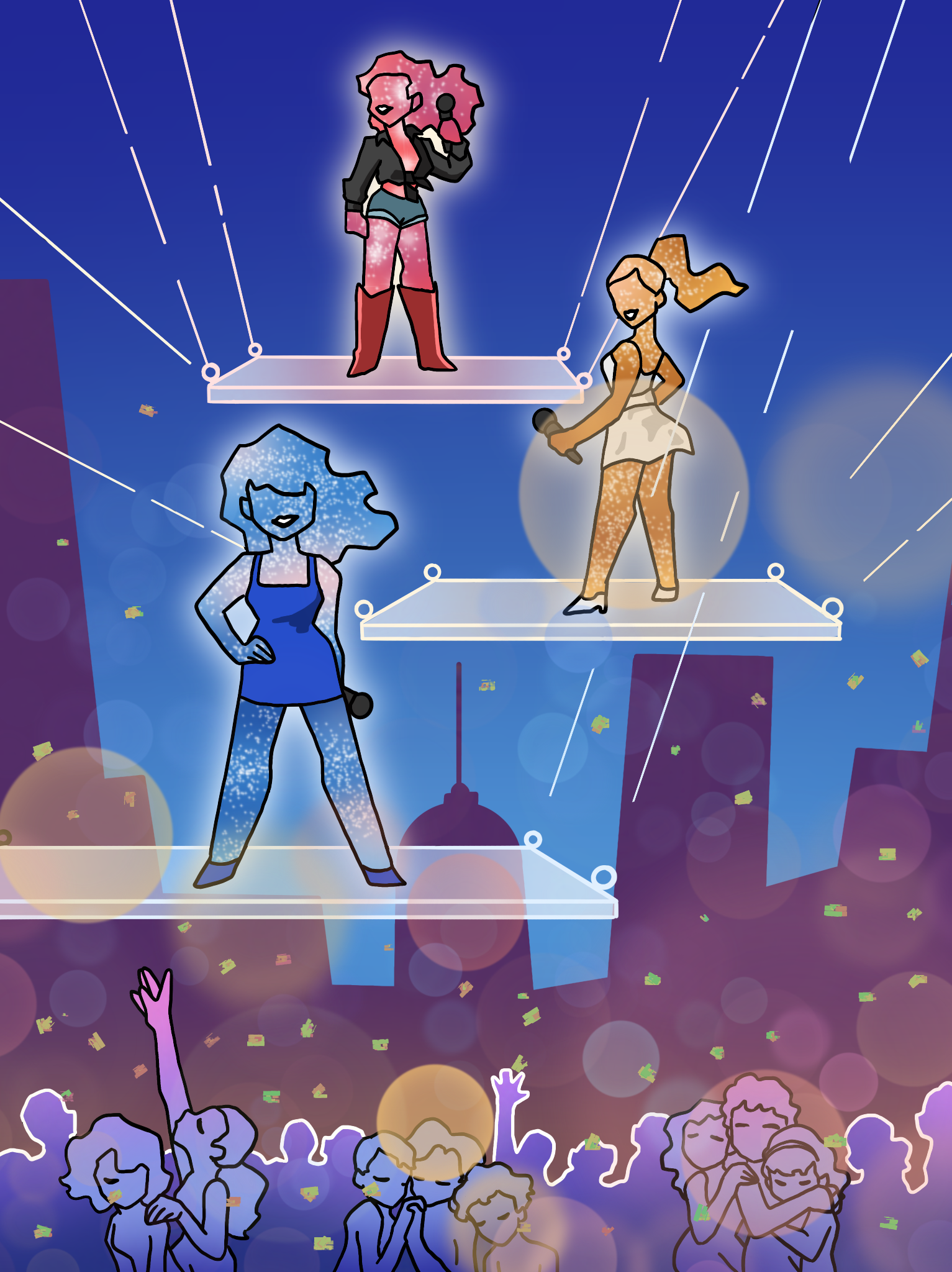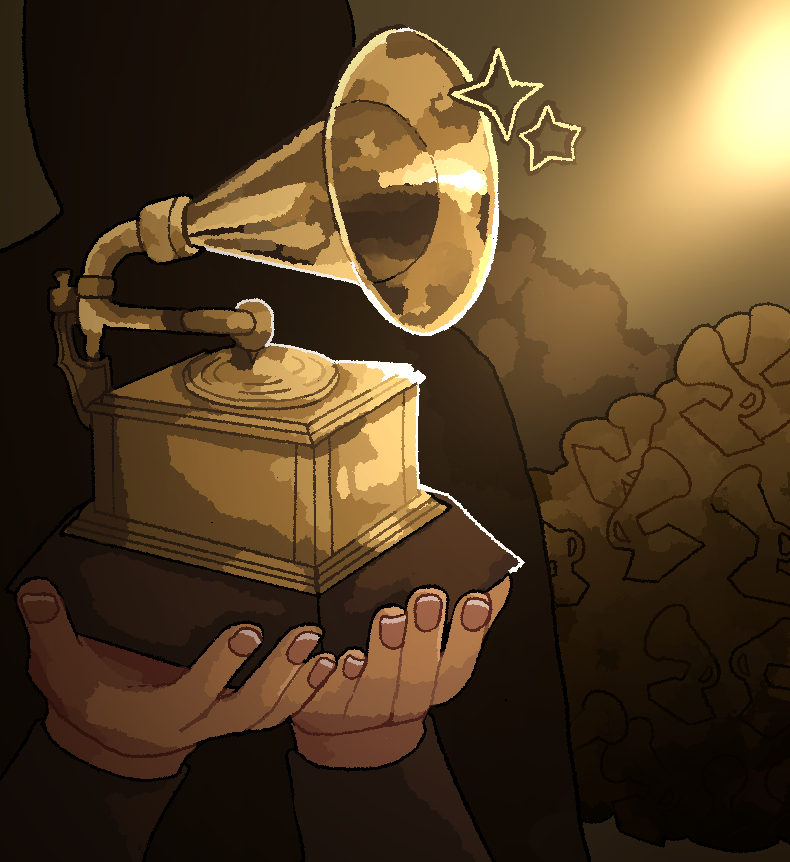Second Take: Social perceptions of pop music as emasculating lead to less relevant male stars

(Helen Sanders/Daily Bruin staff)

By Aisosa Onaghise
April 3, 2025 2:45 p.m.
This post was updated April 3 at 8:28 p.m.
Now more than ever, male pop stars are hard to come by.
Female artists are taking the reins and defining the current pop landscape. Pop stars such as Taylor Swift, Billie Eilish and Sabrina Carpenter exemplify the demand for female hitmakers in the pop sphere with the commercial successes and cultural impact of their 2024 albums. While female dominance in the pop music scene is always welcome, it shines a glaring light on the decreased presence of prominent male pop stars in recent years. Fundamentally, part of this reduction in their prevalence may be due to the cultural perception of pop as a feminine and emasculating genre.
Of course, contemporary music history reveals that male artists are not unfamiliar with dominance and stardom in the pop genre. Music legend Michael Jackson, often dubbed the “King of Pop,” revolutionized pop music and performance – in particular with his 1982 album “Thriller” and its slew of hit singles – and reached unmatched levels of fame through the genre. Other music icons, such as Elton John and Prince, also pushed the boundaries of the genre to cement their status as perennially revered pop stars. Crucially, these male artists managed to obtain considerable respect for their music during their extended runs at the top of the industry without bending to pressure or criticism that their pop success was emasculating to their identities.
[Related: Second Take: The declining popularity of girl groups in Western music harms sonic diversity]
And while male pop artists are by no means an endangered demographic in the industry, their presence and distinction in the music scene are dwindling. The pop landscape is in a bit of a drought for high-profile releases from male stars, as artists such as Harry Styles and Justin Bieber have not released solo projects in three and four years, respectively. Likewise, the most recent albums from formerly reliable hitmakers such as Ed Sheeran and Shawn Mendes have failed to produce lasting hits on the charts. As a result, female artists have been capturing the zeitgeist – deservedly so – while male pop artists continue to sink into mediocrity.
Broadly, it seems that fewer male artists are entering the pop space due to the genre’s perception as feminine and, consequently, emasculating. Pop music is often stereotyped as having an audience primarily composed of teenage girls, women and LGBTQ+ people. From Beatlemania to Bieber Fever, pop has always been marketable to young girls and white suburbia – demographic groups that are often essential in promising profit and radio hits for record companies. Outside of sales, however, social perceptions of male artists in pop are riddled with ridicule and disdain. All pop artists suffer from the public view of their music as frivolous and inferior in musicianship compared to other genres, but male artists in particular sacrifice masculine respect when entertaining in such spaces.
While male artists are struggling in pop, they remain more vital than ever in genres considered to be more traditionally masculine. Genres such as country, rock and hip-hop are generally seen as reinforcing traditional ideas of masculinity in their music, with thematic and aesthetic emphasis on aggression, toughness and cisgender male-centered narratives. The overall presentation of songs in these genres almost unanimously places male artists in positions of control, increasing the likelihood for masculinity to be perceived with authority and, potentially, even credibility. There also tend to be fewer female artists and smaller female audiences in these genres compared to pop. Still, this has not stopped male-oriented genres from achieving more popularity, as hip-hop and rock were the two most streamed genres – beating out pop – last year.
Even when male artists are in pop, they tend to blend accessible sonic elements of pop with other music styles. Pop often acts as an umbrella genre that branches out into numerous subgenres, including fusions between R&B, rock and country. For male pop artists, genre-blending with pop affords them the opportunity to maintain a broader audience while ensuring that they earn hits on pop charts and radio. For example, the blend of dark R&B and synth-pop in The Weeknd’s music allow him to retain a core R&B fanbase while scoring the hits, chart records and larger audience that are attainable through pop. In practice, straddling pop and another genre can offer male pop artists the best of multiple worlds – success without sacrificing much of their masculinity and appearance as serious musicians.
[Related: Second Take: Beyoncé’s Album of the Year win rewards quality, reveals Grammys’ systemic issues]
The effort by male pop artists to retain masculinity also presents itself in the diminishing quality of their live performances. Male pop stars of the past like Jackson and Prince were able to match their female counterparts in entertainment and spectacle, showcasing choreography or exuding charisma and sensuality to pull audiences into their artistic world. Performances from current male artists, however, generally entail a more reserved approach with simple presentation, minimalistic outfits and aesthetic monotony. Pop performances are often defined by a degree of flamboyance, which is associated and more freely afforded with femininity. When male artists present themselves as less feminine on stage, they also send the message that they are more serious musicians – even if this is misleading.
The lack of male pop stars in the current music climate reflects the cultural struggle to redefine masculinity and make vulnerability and fluid expression accessible to men without stigma. Even in a relatively progressive culture, men are still expected to perform a traditional gender role and assume the tough, dominant and stoic archetype of masculinity. Within pop music, male artists run the risk of persistent ridicule and stagnant careers for failing to present masculinity, as socially expected of them. Not only does this rigidity in gender performance stifle creativity, but it also reproduces the same, uninteresting brand of male musicians who fail to stand out as worthy contenders for pop stardom.
Ultimately, pop music would be significantly better off if artists and audiences embraced their feminine side a bit more and realized the strength and innovation it produces.





